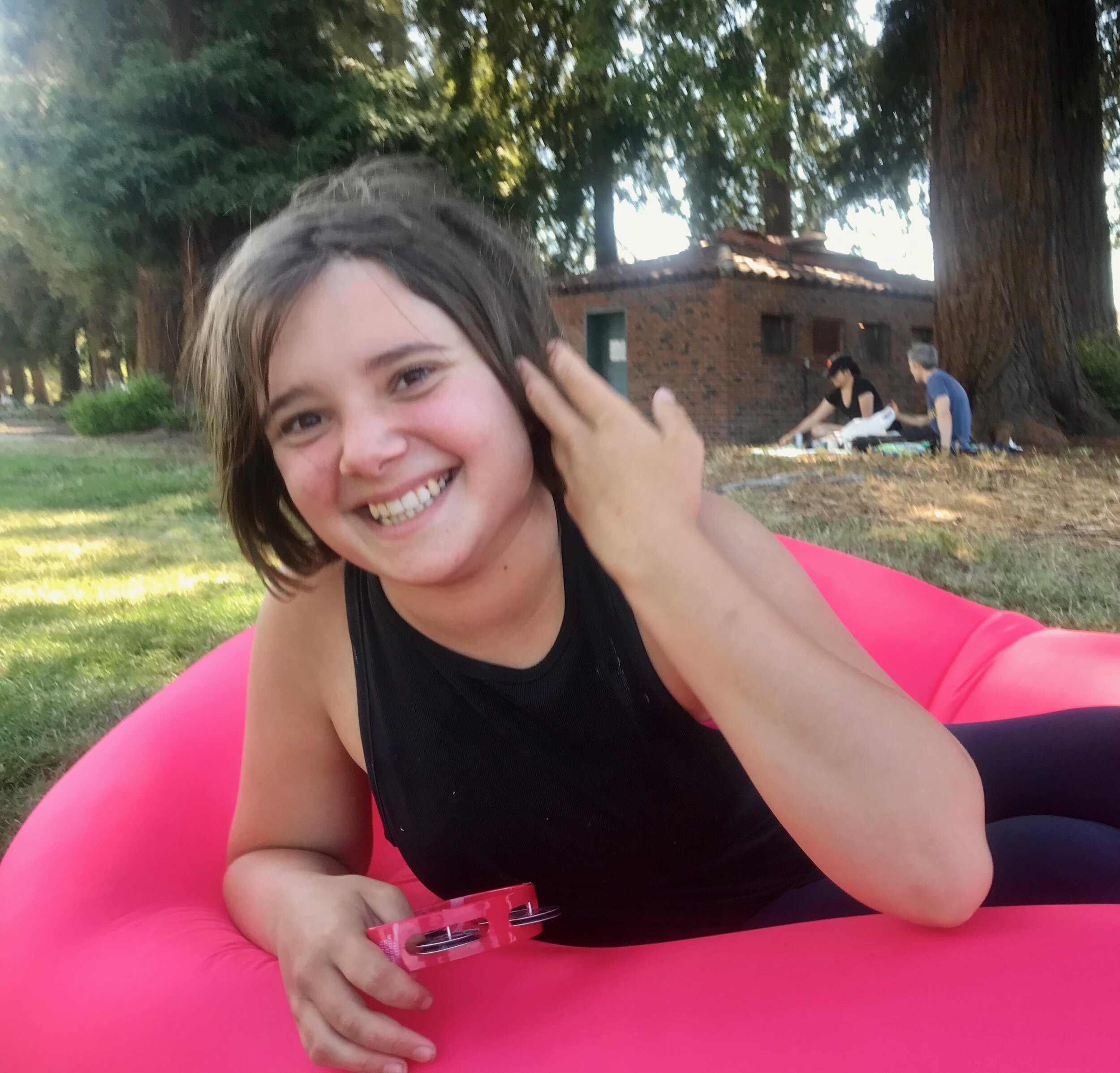Two kids with severe autism, two starkly different realities and needs
Sophie, here social distancing at a park in San Jose, California, is nonverbal and autistic, but known for her giant smile and sweet disposition. Her brother’s autism, on the other hand, can be volatile and dangerous. Their needs are light years apart.
By Jill Escher
Like many other autism families, we are “twice blessed” by the autism fairy. Our younger son Jonathan, 21, and daughter Sophie, 14, both suffer from the disorder — their mysterious brain abnormalities have rendered them nonverbal, with few functional abilities, and they will both require 24/7 care for the rest of their lives. Neither can speak, read, or write, or comprehend even basic abstract concepts.
But there the similarity ends.
Sophie ice skating in March 2020 just before the shutdown.
Over the last two years Sophie has blossomed in many ways. She is joyful, easygoing, and engaging. She likes to play catch and dance to music (we call her deep side-side lunge “The Sophie”), and enjoys long walks with mom as she dribbles her basketball. In quiet moments she often grins and giggles, reaching out for tickles, hugs, and arm scratches.
My friends joke that she has “portable autism” because she’s game to go anywhere, no fuss at all. She’ll sit nicely at most any restaurant — those were the pre-Covid days, alas — and she’s a hearty traveler, her favorite destination being Hawaii where she can frolic in Waikiki waves for hours. She’s also become a fearless blue-run downhill skier, which is pretty remarkable considering that a few years ago she lept off a ski lift in a panic (she was fine). And did I mention the kid can confidently power-skate around an ice rink like a derby girl?
Unfortunately, the last two years have seen my son slide down the opposite trajectory.
He has developed the impossible-to-take-anywhere autism. Despite his intensely loving nature, Jonny has all those hallmarks of the severe end of the spectrum — property destruction, aggression, self-injury, anxiety, outbursts. Whereas I used to take him hiking for hours, today that would be an impossibility. Even persuading him to exit the car would be a Herculean task that could lead to a meltdown.
Jonny playing with his iPhones a few months ago.
These days you see a Jonny with his forehead and arms slashed with self-inflicted scratches. My car is so destroyed by his ravages that it literally has no back seat remaining. We’ve been through about a dozen shredded mattresses and beds in just recent months. Outdoors, he will peel bark from trees or rip his clothes or dash across the street despite desperate attempts to keep him safe. While I could easily spend years caring for Sophie with minimal stress, even one day with Jonny can leave a caregiver frazzled and exhausted.
Two young people with severe forms of autism, yet so vastly different I hardly consider them in the same category of disability. Jonny’s care needs are so off the charts compared to Sophie’s, it’s like comparing a mission to Mars to a walk in the park.
To my mind there are some lessons to be learned from our little microcosm of the autism world. Mainly, that the autism experience — even within one family and limited to the severe end of the spectrum, never mind the galactic expanse of the mid and high functioning ranges — is so immensely varied that any attempt by self-advocates to “speak for autistics” is absurd and should be presumed invalid. While constructive advice is always welcome, attempts to superimpose one’s narrow agenda on others with starkly different realities and needs is nonsensical. As a friend said, it’s like an attempt at voter suppression of severe autism families, stripping them of their voice.
Amy Lutz, who serves on the NCSA board, just published a piece in Psychology Today about the dangerous phenomenon of “partial representation,” where one group purports to speak for another, thereby misinforming policymakers and the public about the real needs of people disabled by autism. I encourage you to read it.
Says Lutz, “In my opinion, autism has just become too broad—representing both married college graduates and profoundly intellectually disabled adults who spend their lives in diapers and helmets … — to be fairly represented by one voice.” She adds that “claims of representation need to be made carefully, with humility and respect for diverse perspectives. And the broader the claim, the more skeptically it should be treated.”
This is clearly true. My own experience under my family’s own roof has taught me that advocacy for autistic people is only right, moral and authentic if it emphasizes an individualized, person-centered approach based not on arbitrary notions of group identity, but instead on the meeting of each diverse need, rooted in respect for each reality — what works for one person may very well fail another. Anything less is false advocacy and fraud.
Jill Escher is President of the National Council on Severe Autism.
Disclaimer: Blogposts on the NCSA blog represent the opinions of the individual authors and not necessarily the views or positions of the NCSA or its board of directors.



